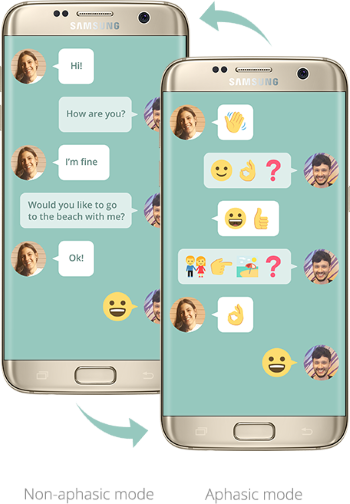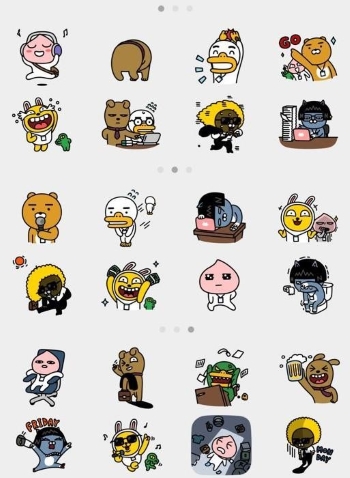
As smartphones became an irreplaceable part of one’s everyday life, communication using text messages and messenger applications has become prevalent, making up a great part of people’s means of communication in modern society. Since written communications lack facial expressions or direct oral interaction between one another, emojis are used frequently, helping users express their feelings and intentions effectively in an indirect way. This delivery of emotions through a person, product or service is referred to as, the substitution of feelings.
“Substitution of feelings” is a term when something or somebody other than oneself expresses emotions that are challenging to expose to others. A prime example of “substitution of feelings” is the use of emojis, which has developed to facilitate communication as an emotional agent. They convey different feelings people experience in daily life and it is a substitutional tool for non-verbal cues as well.
According to KakaoTalk, one of the most widely used online messengers established in Korea, approximately two billion emojis are sent in messages per month. It is estimated that the emoji market has increased by 900 times in the past six years. The rapid expansion of the use of emojis are viewed as a frequent and necessary part of effective communication with an emphasis on visual interaction via pictures and videos.
Kim Ran-do, a professor at Seoul National University’s Department of Consumer Sciences, elaborated on the background behind the trend of “substitution of feelings.”
“This trend appeared largely because people are now so accustomed to utilizing digital apparatuses. They feel like they have no place to share their true feeling outwardly through direct conversations,” Kim remarked.
Although the emphasis on emoji communication and the demand for emotion is both effective and convenient in many ways, there are several limitations.

Professor Kim discussed the attitude we need when constantly utilizing communication platforms that require emojis for effective communication.
“With the development of technology, people are losing places to share their genuine emotions,” Kim said. “People have to face emotions as they are an integral part of composing one’s unique individuality. We have to improve skills for embracing negative feelings as well”
Regardless of the side-effects it may bring about, the trend of using emojis has marked a change not only in terms of communication via social media, but also in the job market as well. Based on this trend related to the substitution of emotions through emojis, the digital age has led to the advent of jobs such as specialized emoji translators to interpret and analyzing the implicit meanings that emojis convey.
The United Kingdom global language firm “Today Translations” has begun to recruit emoji translators. These workers investigate how emojis are translated differently around the world. For instance, in the West, the facial expression of laughing while crying is delivered as a message of being too funny. On the other hand, in the Middle East, it conveys a negative connotation associated with despair. Translators analyze these kinds of variances where typical translating software is incapable of executing this ability. By using the translator’s knowledge and expertise, delivering an appropriate message regarding cultural contexts is accomplished.
In addition, in April 2017, Samsung Electronics’ corporate branch in Italy launched an application called “Wemogee” which enables users to communicate through emojis. It is utilized as an interactive tool for patients with aphasia as well as a means to prevent Alzheimer’s disease. Accompanied by the aid of speech therapists, the most commonly used phrases in an informal conversation are defined and these words are subsequently translated and ordered into logical sequences of emoticons.
Based on this increasing trend of using emojis to deliver emotions to others and the establishment of more job opportunities related to emojis, they are crucial in terms of effective communication in modern society where the use of digital device is widely used.

